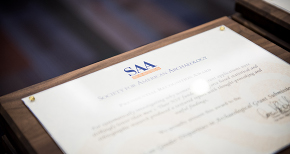Indigenous Archaeology in Practice [Foundational Skills]
When NAGPRA was enacted it empowered tribes to claim their ancestors and cultural patrimony. It also pushed forward, a movement and Indigenous Archaeology took shape. It has been with us for nearly 30 years now, but with a few exceptions, the total control of our resources never really came to fruition. An amendment to the California Environmental Quality Act, Assembly Bill 52, has taken empowering tribes to a new level and it has lead to a rebirth of that original movement. Along with biologists, geologists, archaeologists, paleontologists, etc., tribes are now at the table while creating mitigation plans to impacted
resources. These new Tribal Cultural Resources not only include, archaeological sites, features and objects, but also tribal stories, landscapes, medicine collection areas, hills, caves, waterways, etc. The impact has not only added to the interpretation of archaeological data, but some tribes have created their own CRM enterprises to collect, analyze, and curate the material culture of their ancestors directly. This program will explore how this reborn paradigm has impacted archaeology, tribe vs archaeologist relations and the resources themselves.


